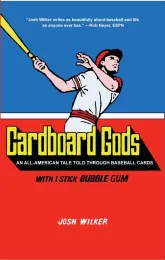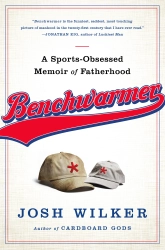Tour Guide
Pitcher and Sky #2
The primary focus of this tour is a small unofficial series of baseball cards within the 1976 series of Topps baseball cards. We have seen the first of these cards already, featuring Alan Foster, but before proceeding to the next in the series let’s pause for a moment and consider a card from nearly two decades earlier, the 1957 card of Dave Sisler. Note the profound similarity of pose. The artistic mind behind the Alan Foster card did not invent the arms upraised pose. Essentially, there’s nothing new under the sun. What do you do with the burden of history? What do you do with limitations?
My mother’s study of Honoré Daumier focused on a series of his work titled Histoire Ancienne. It was comprised of caricatures that lampooned political injustices and cultural pomposities while puncturing the overbearing artistic orthodoxy of his day, namely the solemn, humorless neoclassicism reflected most notably in the work of Jacque-Louis David and Jean-Auguste-Dominique Ingres. David and Ingres were the acknowledged masters looming over Daumier’s world, but instead of aping their painstaking reinterpretation of classical art he crossed the tracks, as it were, to work the “low art” side of town, using the symbolism of neoclassicism—the classical lexicon of heroes and gods—in new ways, heroes and gods pocked and elongated, stooped and frail, perverse with entirely human need. In lesser hands, the work would have been merely the stuff of transiently hilarious vaudevillian schtick, but Daumier was a master craftsman and his work has undeniable, irrepressible life in it. It swings. He wasn’t the only artist producing what my mom identifies as “classical parody,” but the work of the other satirists of his time is stiff and forgettable compared to Daumier’s. This is where so-called “low art” rises to the equal of anything in the realm of “high art”: it has undeniable lasting life, transforming the seemingly transitory nature of its one-off gag-work into a significant turning in the history of art. I guess I’m trying to approach the slippery unapproachable subject of irony.
Irony, in art, has to swing to exist. In the sense that I am using the word irony, there is an awareness, so pronounced as to be painful, of what has come before, an addressing of that burdensome infinite prelude, and in works of true ironic genius a toppling of it. Maybe music can be a way of illustrating my idea on this. Consider the Kingston Trio, that folk group that rode a general interest in folk music to massive popularity in the late 1950s and early 1960s; the Kingston Trio was not venturing into the realm of irony. The group’s orthodox approach to old folk music was similar in some ways to the way Ingres and David solemnly channeled their interpretation of classical art. By contrast, the playful, unorthodox, eventually electrified and amplified (and—by orthodox folkies—vilified) hijacking of folk forms by a young interloper born as Robert Zimmerman: now that was fucking Irony. Go a little later in music history, the mid-1970s, and compare, say, Boston or Styx to The Ramones. On one hand, the short history of rock was ossified in slick unreflective arena acrobatics; on the other hand, four otherwise useless hooligans channeled with ape-man simplicity and focus—and consciously embraced the bungling of, the transfiguring of—the sheer ecstasy of the short, sweet pop song. Johnny, Joey, Dee Dee, Tommy. Hallelujah irony.
Which brings us back to this Dick Sisler card, or more specifically the reckoning of it by Brendan C. Boyd and Fred C. Harris in The Great American Baseball Card Flipping, Trading and Bubble Gum Book. Anything I write about a baseball card, anything anyone ever writes about a baseball card, does so in the shadow of that book. It appeared in 1973 and though it has over the years attracted a cult following I believe it’s underappreciated. It seems at first glance to be a product of so-called “low art,” a jauntily cobbled together collection of baseball cards from the 1950s and 1960s accompanied by the authors’ brief descriptions of the cards. As those who have fallen in love with the book know, these descriptions are poignant, hilarious, eye-opening, and as narcotically enjoyable as the world’s greatest piece of bubble gum. Beyond the sum of its parts, however, there is in the book something altogether new. Though the sardonic, leveling gaze of the authors was not unknown in other parts of the fragmenting culture of the early 1970s, the book was among the first—and was the most hilarious and therefore effective—to puncture the long-prevailing classicism of baseball writing. Even as recently as the all-encompassing cultural hagiography of Mickey Mantle (more to come on this), baseball writing and baseball imagery was most commonly a hallowing of othwerworldy abilities and of the worship of these abilities and of boyhood itself, where this worship was the strongest. Boyd and Harris used the cards of their youth to level and to decimate and to puncture and—in brand new ways—to praise, to swing in a way baseball writing hadn’t swung before. I’ve read the book many times and it still makes me laugh.
The authors mourn for the lot of Dave Sisler, who in a way is like all of us, burdened by history. Sisler was the son of a Hall of Famer and the brother of a pennant-winning hero. “Do you imagine,” the authors write, “that there were ever fifteen seconds during the waking existence of Dave Sisler that he was ever able to forget these facts?” The authors don’t comment on the arms upraised pose of Dave Sisler—a pose repeated throughout baseball history, as if it were the symbol for the inescapable shackling of history itself, one pitcher after another locked into a handcuff-ready surrender, year after year after year—but they do turn their gaze to the Dick Sisler offering from the exhibit that haunted and exalted their childhood:
Wouldn’t he have been happier as a lawyer or a clamdigger or something along that line? He must have known that no matter how good he was he was never going to be good enough. He seemed bright, too. He graduated from Princeton, wore glasses, and was very analytical in postgame interviews. Look at his face in the card—serious, intelligent, taut—the face of an early suicide.
This was not how people wrote about baseball players. It’s nearly forty years since the words were written and I’m still fucking laughing.







You must be logged in to post a comment.